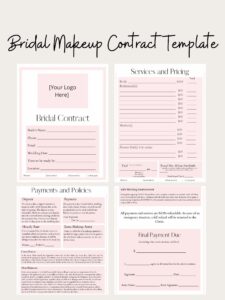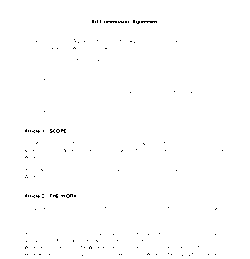Venturing into the world of independent music, whether as an aspiring artist or a burgeoning record label, is an exciting journey filled with creative passion and ambition. You’re ready to share your art, build a fanbase, and make your mark without the often stifling constraints of major labels. However, as exhilarating as the creative process is, the business side of music demands careful attention to detail.
That’s where agreements come into play. To ensure a smooth, professional, and mutually beneficial relationship between an artist and an independent label, having a solid independent record label contract template is absolutely essential. It’s not just about protection; it’s about clarity, understanding, and setting the stage for a successful partnership.
What to Look For in Your Independent Record Label Contract Template
When you’re crafting or reviewing an independent record label contract template, clarity and comprehensiveness are your best friends. A good contract should leave no stone unturned, outlining every aspect of the artist-label relationship to prevent future misunderstandings or disputes. Think of it as the blueprint for your musical collaboration, defining who does what, who gets what, and for how long.
Key Parties and Term
First and foremost, the contract must clearly identify all parties involved – the artist (or band members, individually) and the record label. Beyond identification, the “term” of the agreement is crucial. This specifies how long the contract will be in effect, perhaps for a certain number of albums, a set number of years, or a combination. It should also detail any options for renewal or termination, ensuring both parties understand the duration of their commitment.
Rights Granted and Ownership
This section is arguably the most critical for an independent artist. It outlines exactly which rights the label is acquiring from the artist and, just as importantly, which rights the artist retains. In the independent scene, artists often want to maintain more control over their masters. The contract should specify:
- Master Recording Rights: Does the label own the masters, license them for a period, or simply have distribution rights?
- Publishing Rights: Does the label take a share of publishing, or is that separate?
- Image and Likeness Usage: How can the label use the artist’s name, image, and likeness for promotional purposes?
Being precise here prevents heartache down the line, especially concerning who controls the creative output and its long-term commercial exploitation.
Royalties and Compensation
Money matters are always delicate, but a transparent contract makes them straightforward. This part of the independent record label contract template should detail how the artist will be compensated. This includes royalty rates (percentages of net receipts from sales, streaming, sync licenses, etc.), any advances provided (and how they are recouped), and the schedule for accounting and payments. Clear definitions of “net receipts” and “recoupment” are vital.
Marketing, Promotion, and Distribution
A record label’s primary role is often to amplify the artist’s music. This section should outline the label’s commitments regarding marketing, promotion, and distribution efforts. What kind of budget will be allocated? How will the music be distributed (digital platforms, physical copies)? What promotional activities will the label undertake (press, radio, social media campaigns)? While specific outcomes can’t be guaranteed, a commitment to reasonable efforts is important.
Deliverables and Obligations
Finally, the contract will detail the obligations of both the artist and the label. For the artist, this might include delivering finished master recordings, artwork, performing promotional duties, and adhering to release schedules. For the label, obligations include making payments, providing accounting statements, distributing the music, and fulfilling agreed-upon marketing efforts. Clearly defined responsibilities ensure both parties understand what is expected of them throughout the term of the agreement.
Navigating Common Pitfalls with Your Contract
Even with a well-structured contract template, the specifics of any agreement can be complex. It’s easy to overlook crucial details or misunderstand legal jargon, which can lead to significant problems down the line. Remember, a contract isn’t just a formality; it’s a legally binding document that shapes your professional future.
One of the biggest mistakes artists and even new labels make is not having the contract reviewed by a qualified entertainment lawyer. While a template provides a solid starting point, every situation is unique, and a lawyer can ensure the terms are fair, legal, and tailored to your specific circumstances. They can spot red flags that an untrained eye might miss.
Pay close attention to clauses that might seem benign but can have long-lasting implications. For instance, broad exclusivity clauses could restrict an artist from working on other projects, or language regarding the assignment of intellectual property rights might inadvertently give away more control than intended. Unclear definitions of “expenses” or “recoupable costs” can also lead to disputes over how much an artist actually earns.
- Overly broad exclusivity clauses
- Vague royalty deductions or definitions of “net revenue”
- Excessively long contract terms without clear artist exit options
- Insufficient or undefined marketing commitments from the label
- Clauses that give the label unilateral control over creative decisions
Always aim for transparency and balance. A good contract fosters a partnership where both parties feel valued and protected. Don’t be afraid to negotiate terms, ask questions, and ensure you fully comprehend every paragraph before signing. Your future success depends on the strength and fairness of your foundational agreements.
Ultimately, a robust agreement serves as the backbone of any successful artist-label collaboration in the independent music landscape. It provides a roadmap, setting expectations and ensuring that everyone involved is aligned on the goals and the journey ahead. Taking the time to get it right from the outset will save countless headaches and potential disputes down the road, allowing you to focus on what truly matters: making incredible music.
By understanding the key components, seeking professional advice, and meticulously reviewing every clause, both artists and labels can build strong, equitable relationships that foster creativity and drive success. This diligent approach is an investment in your musical career, protecting your art and your future in an ever-evolving industry.


